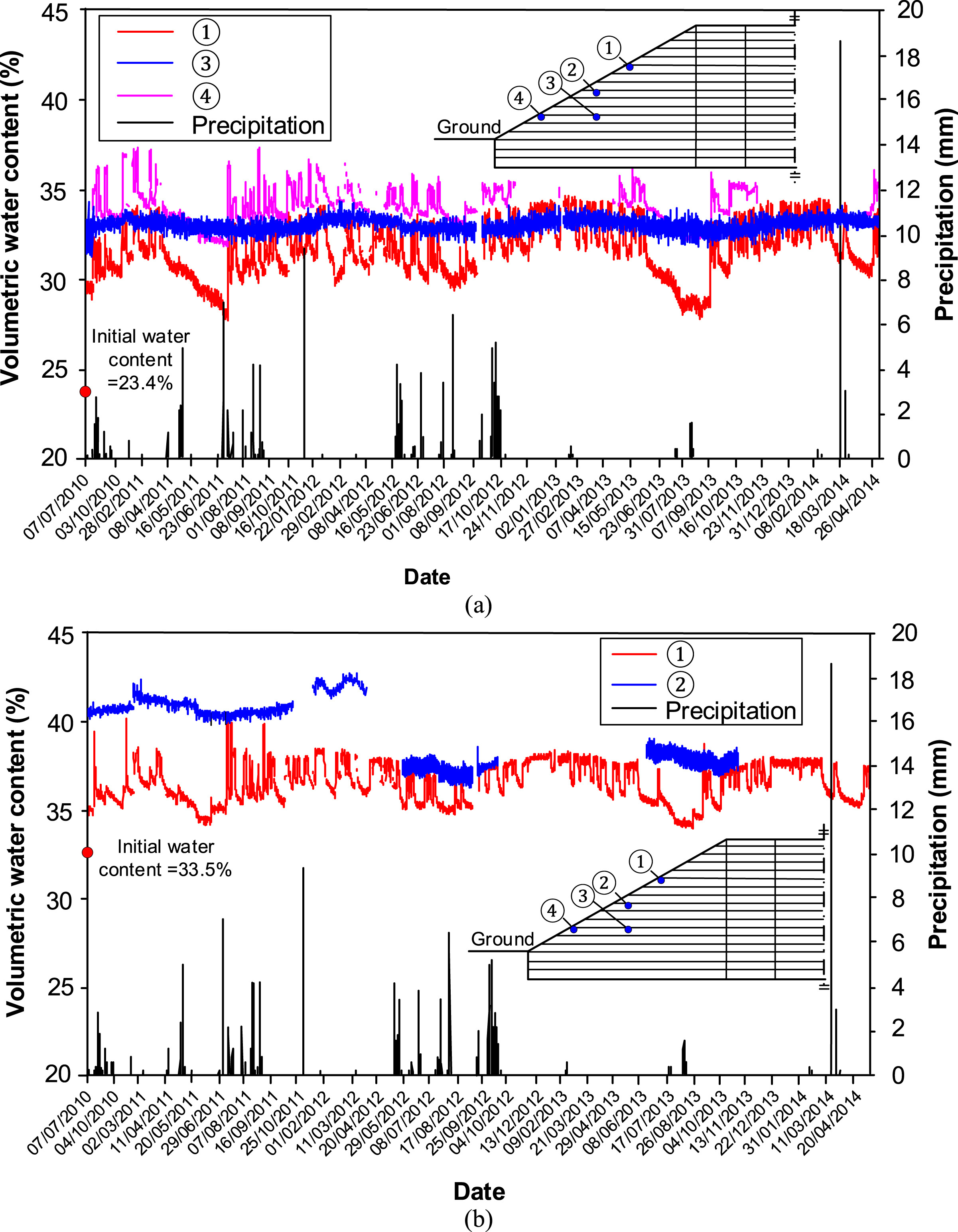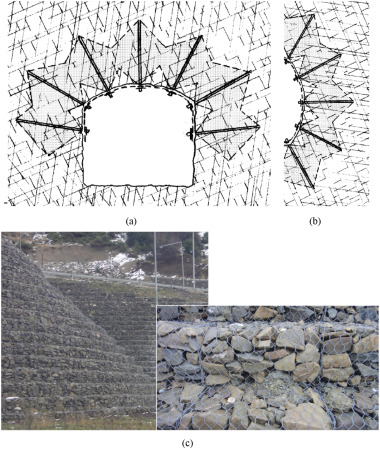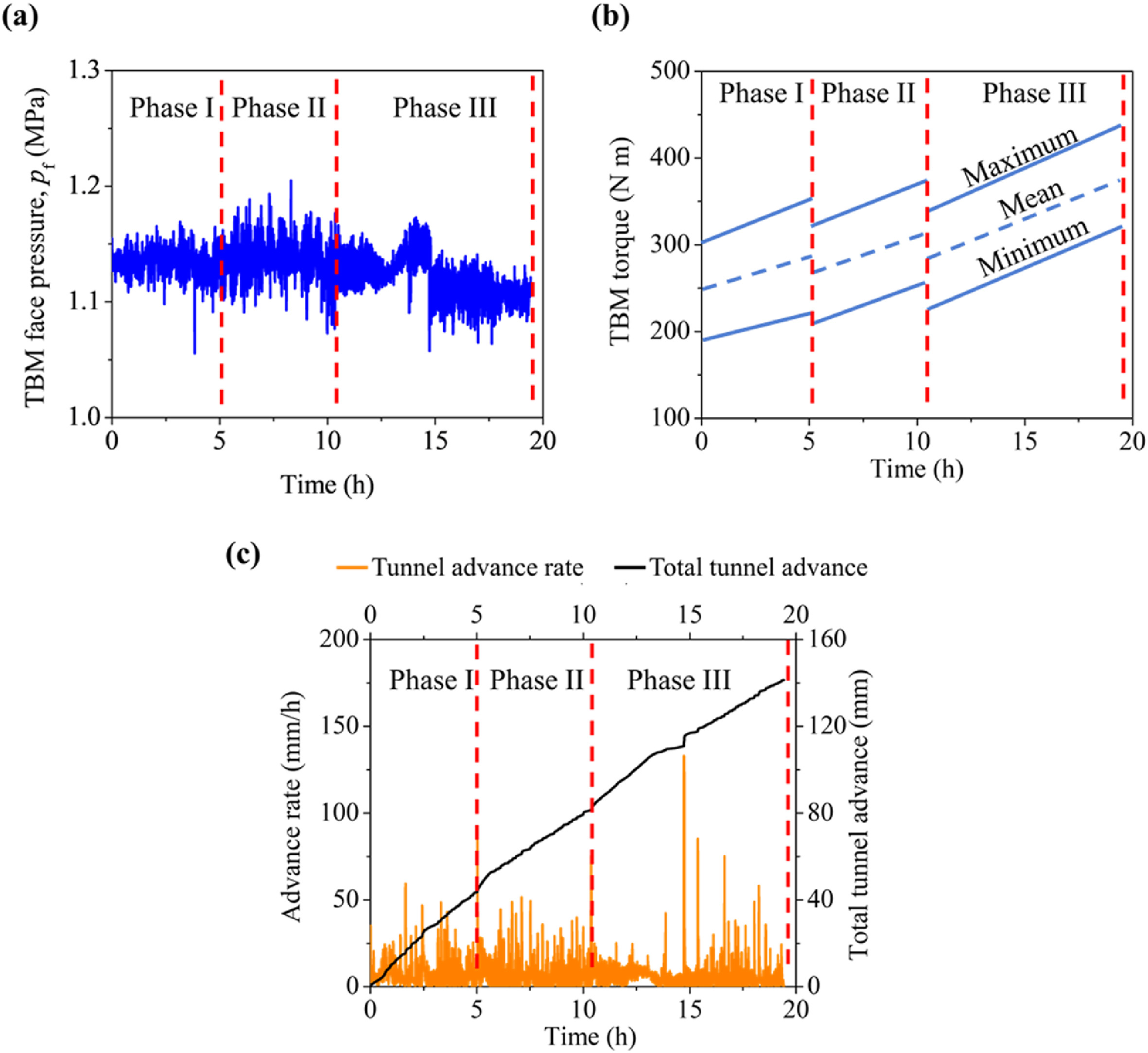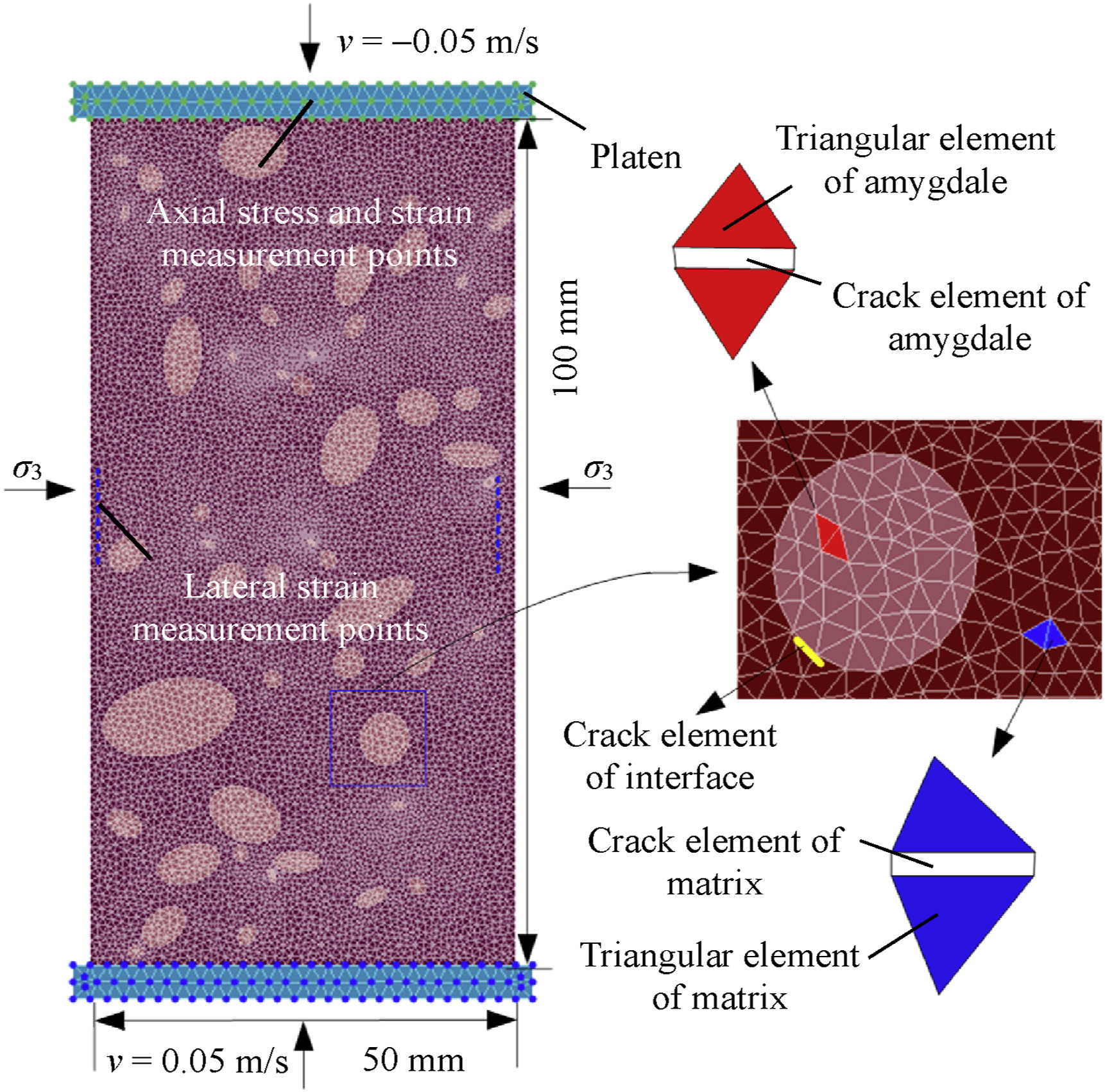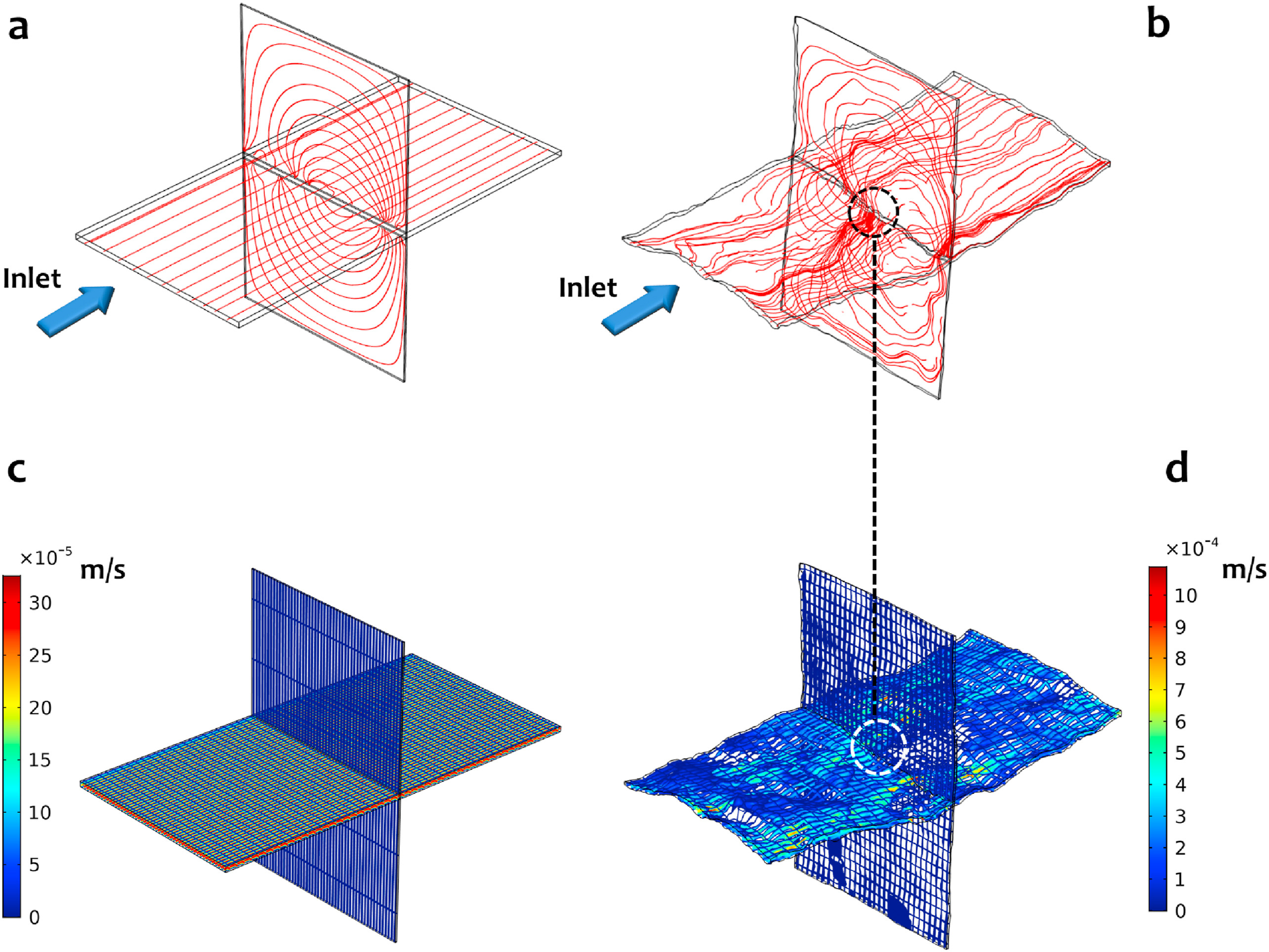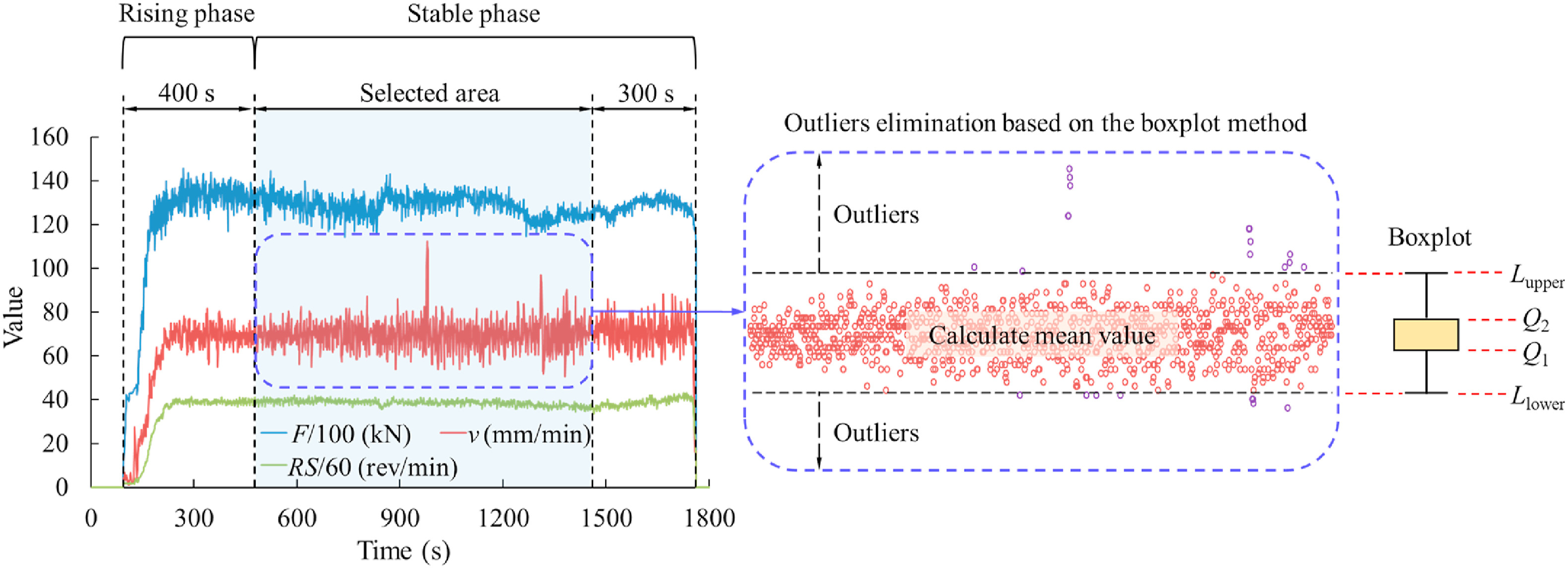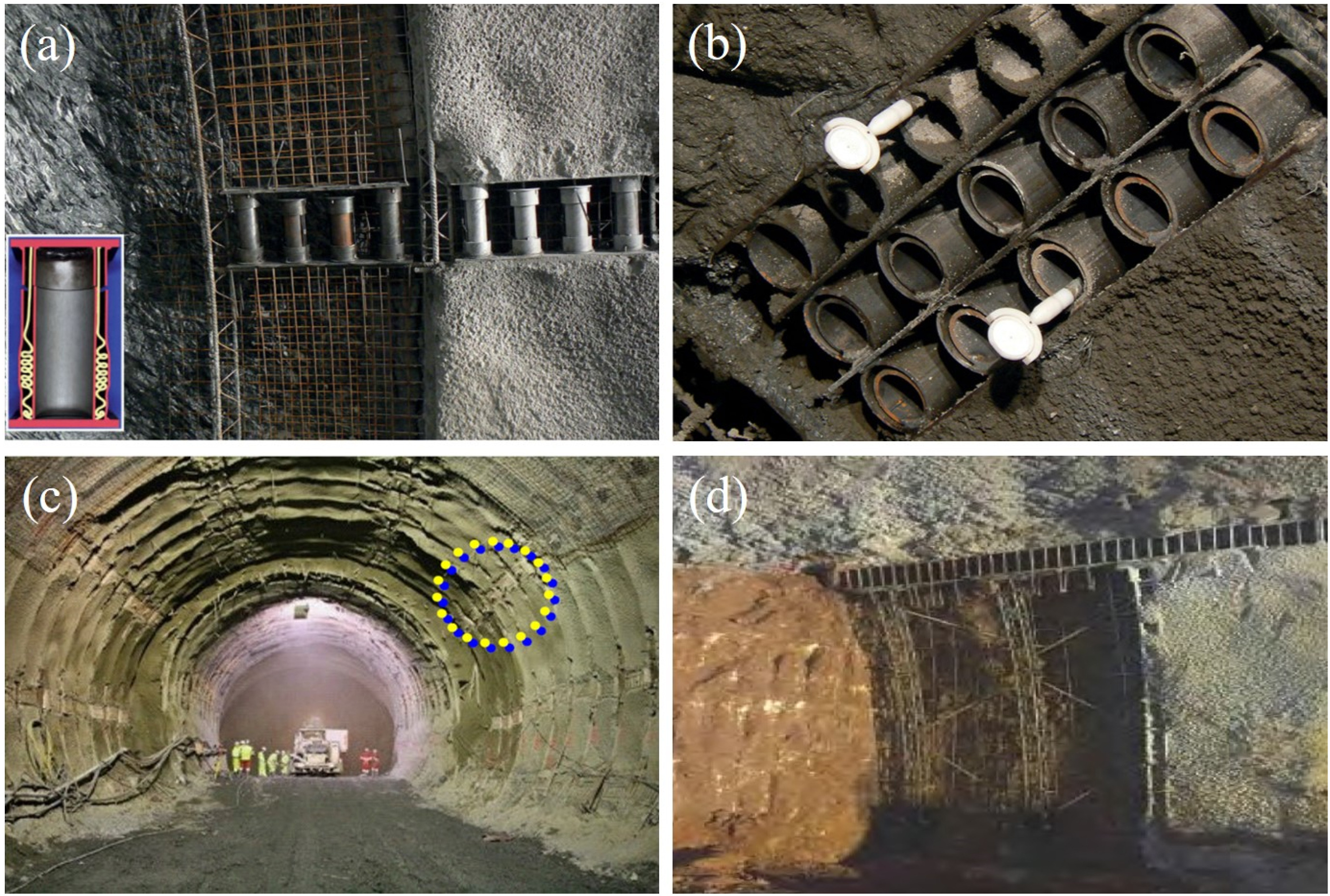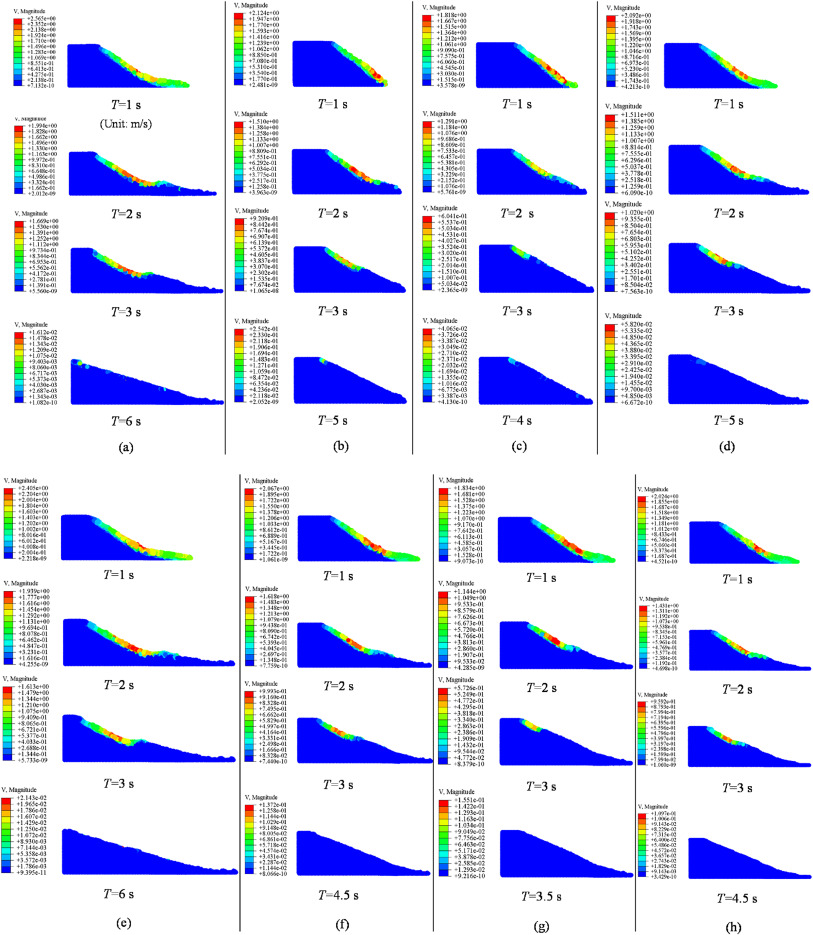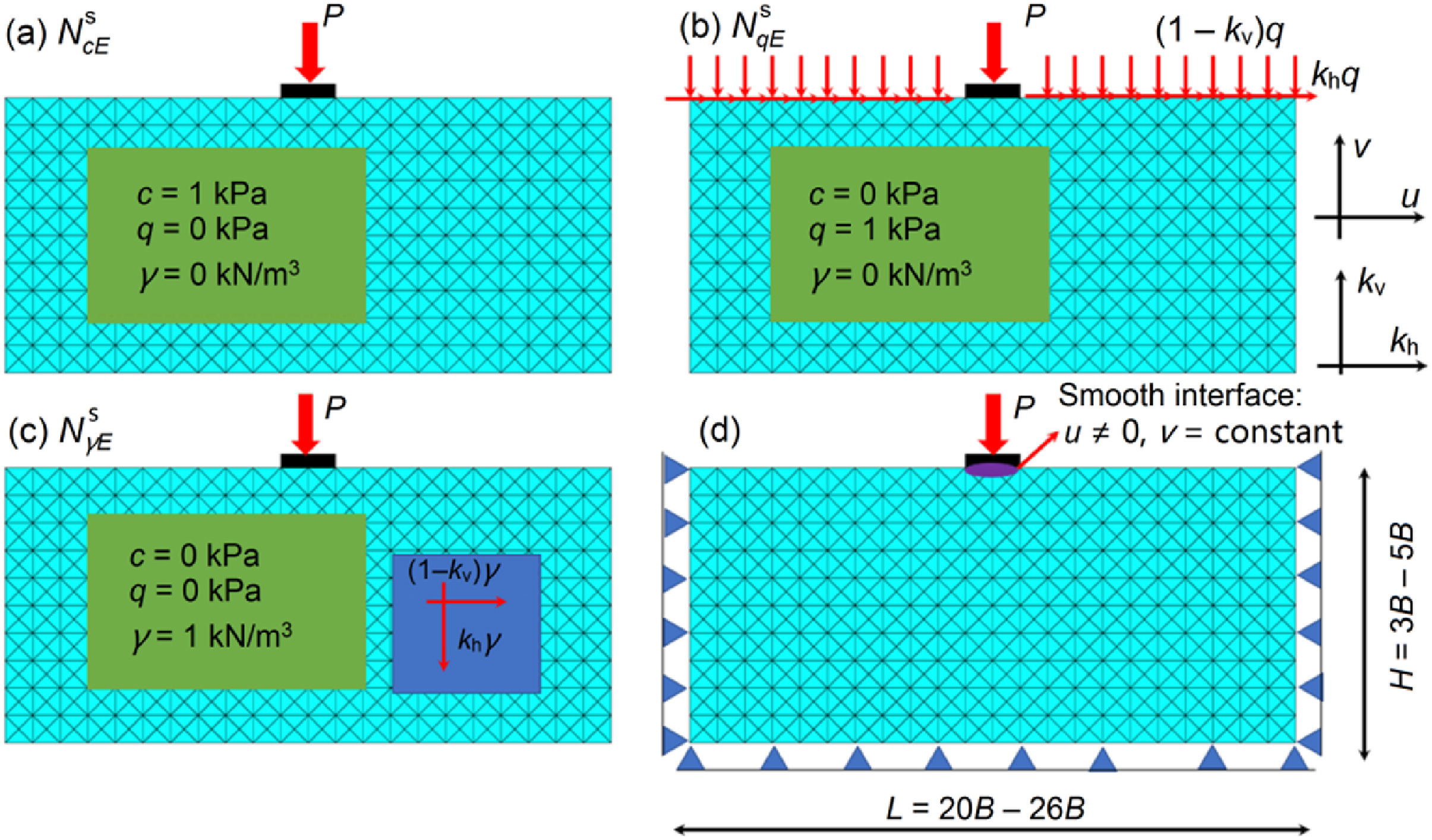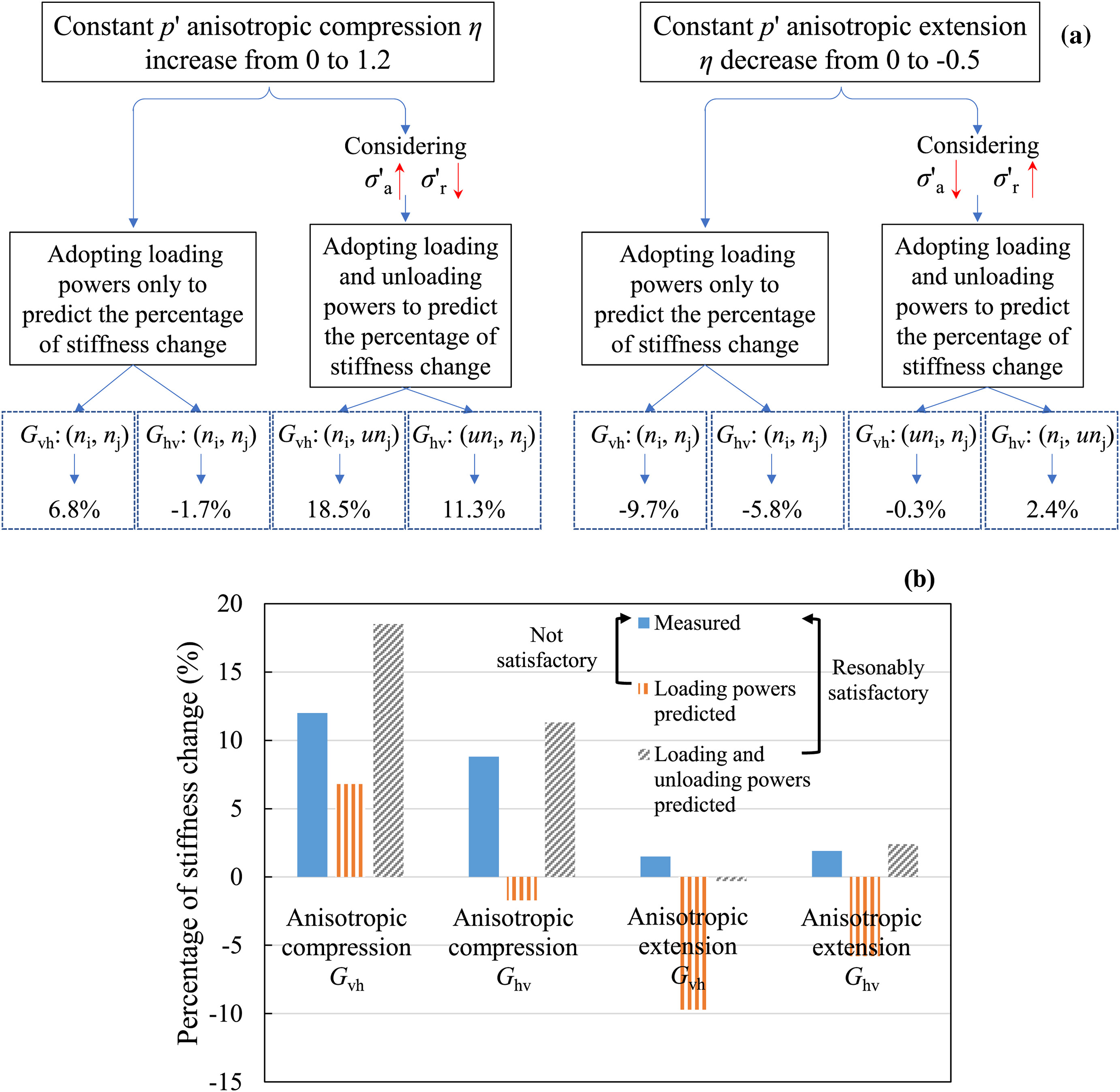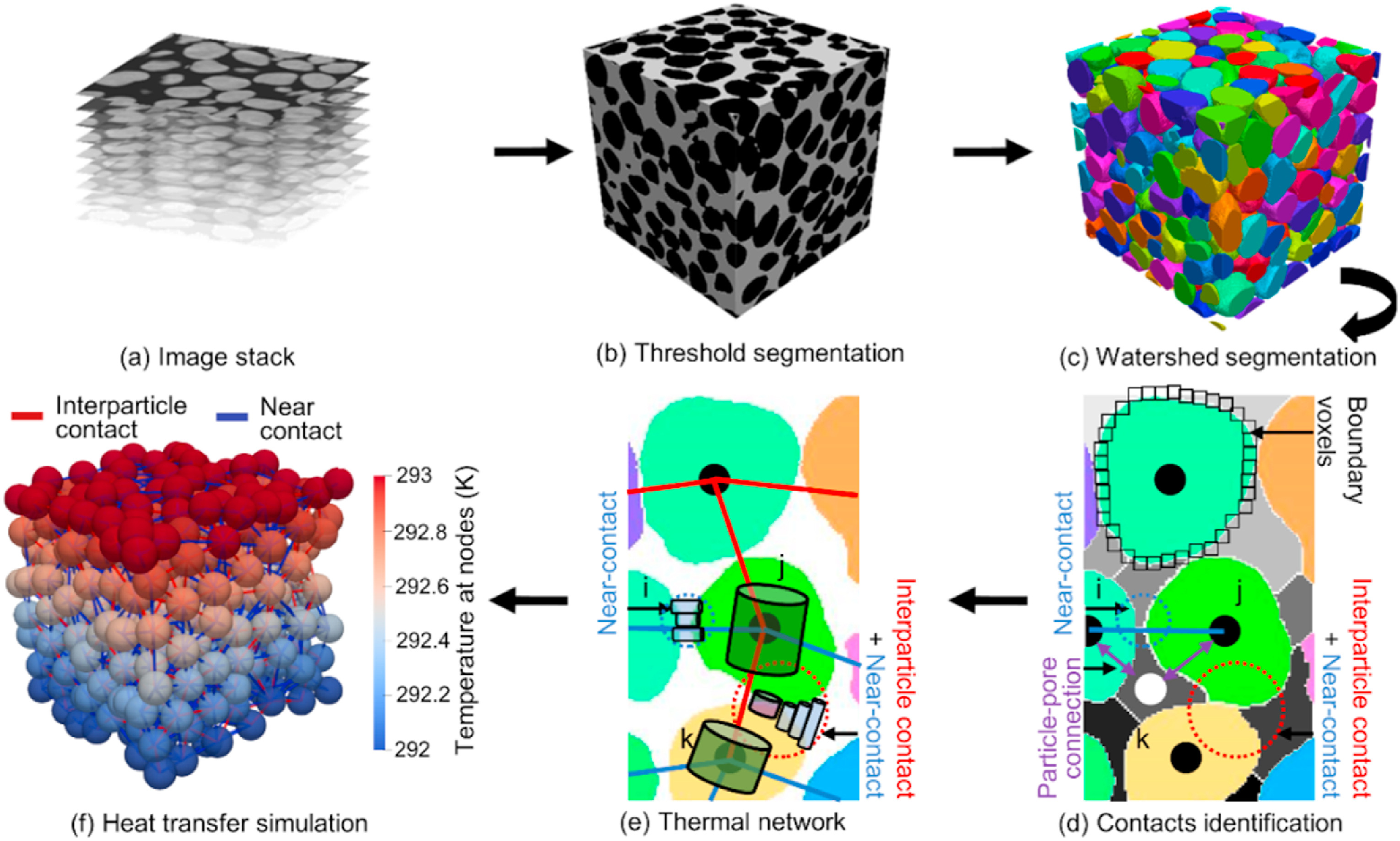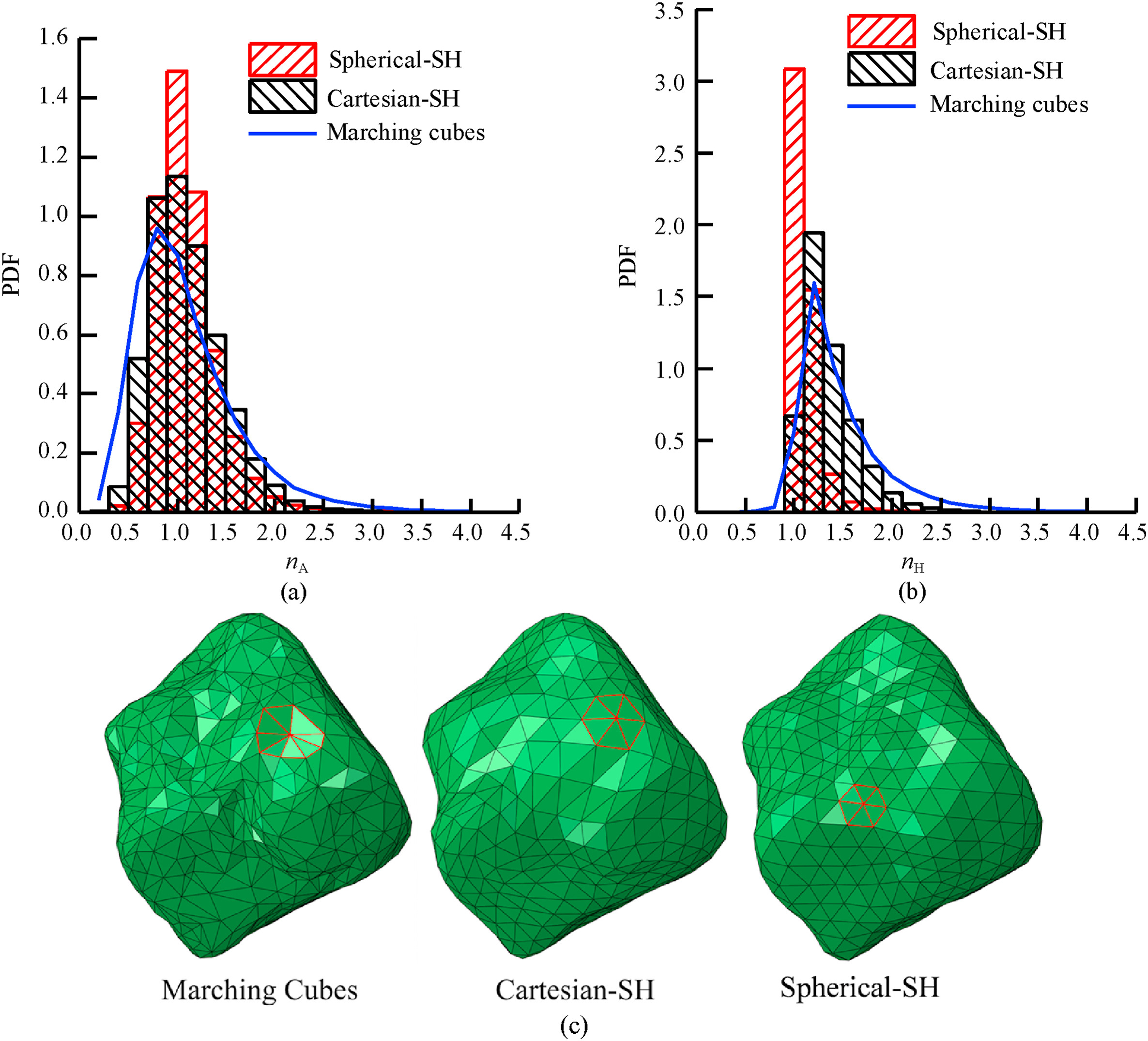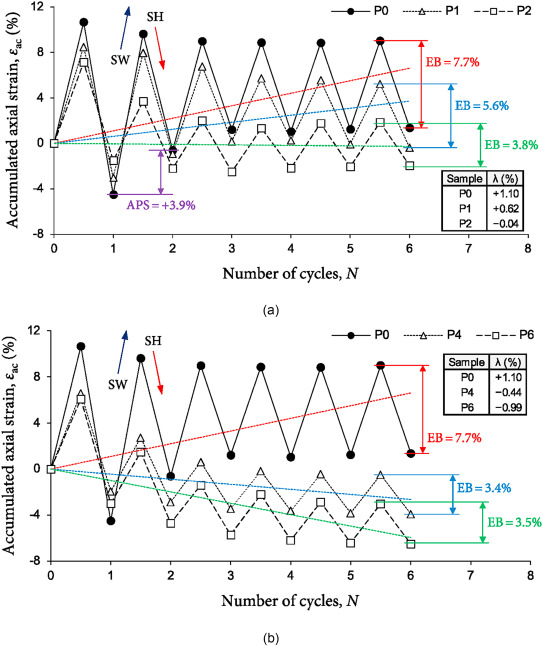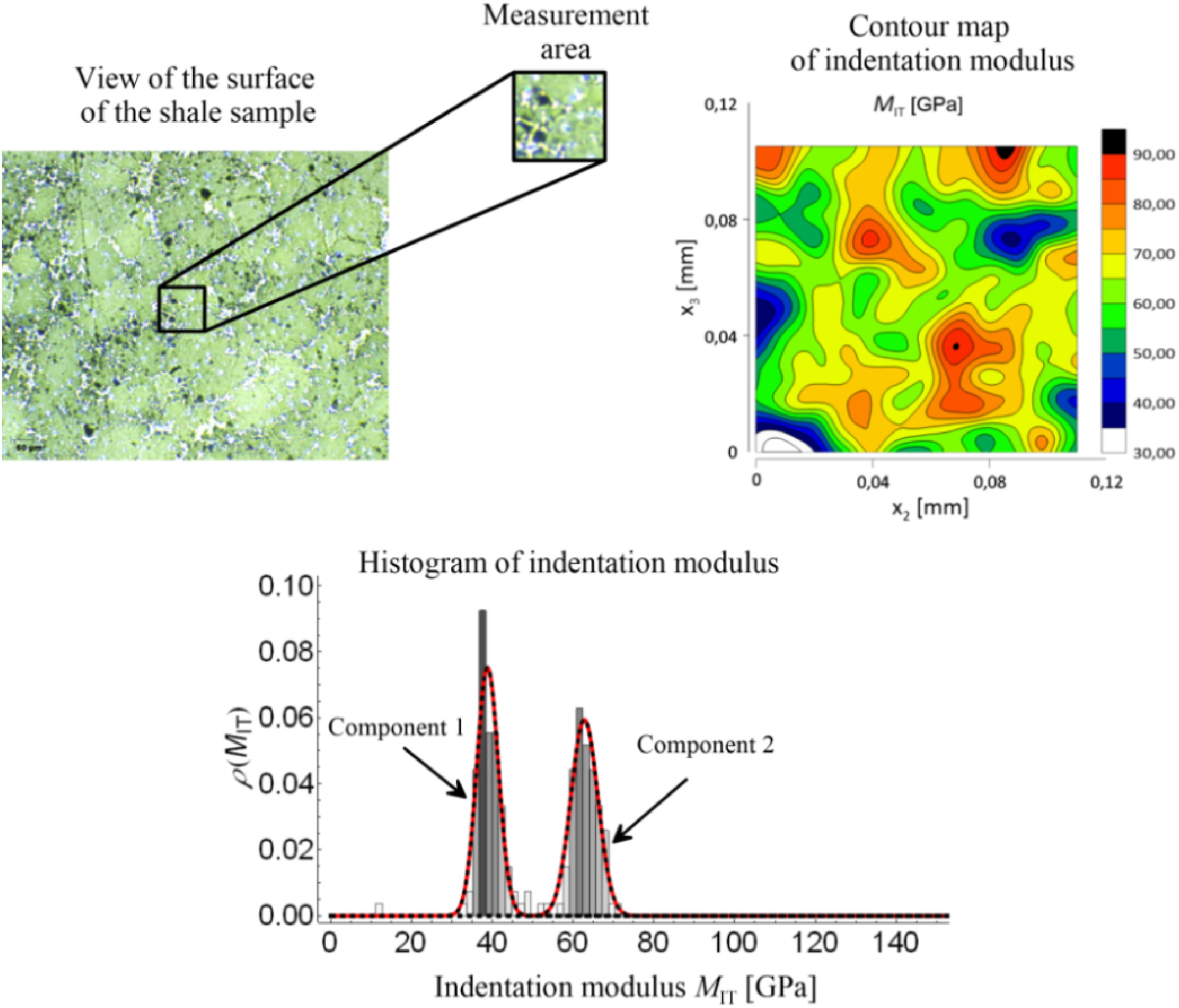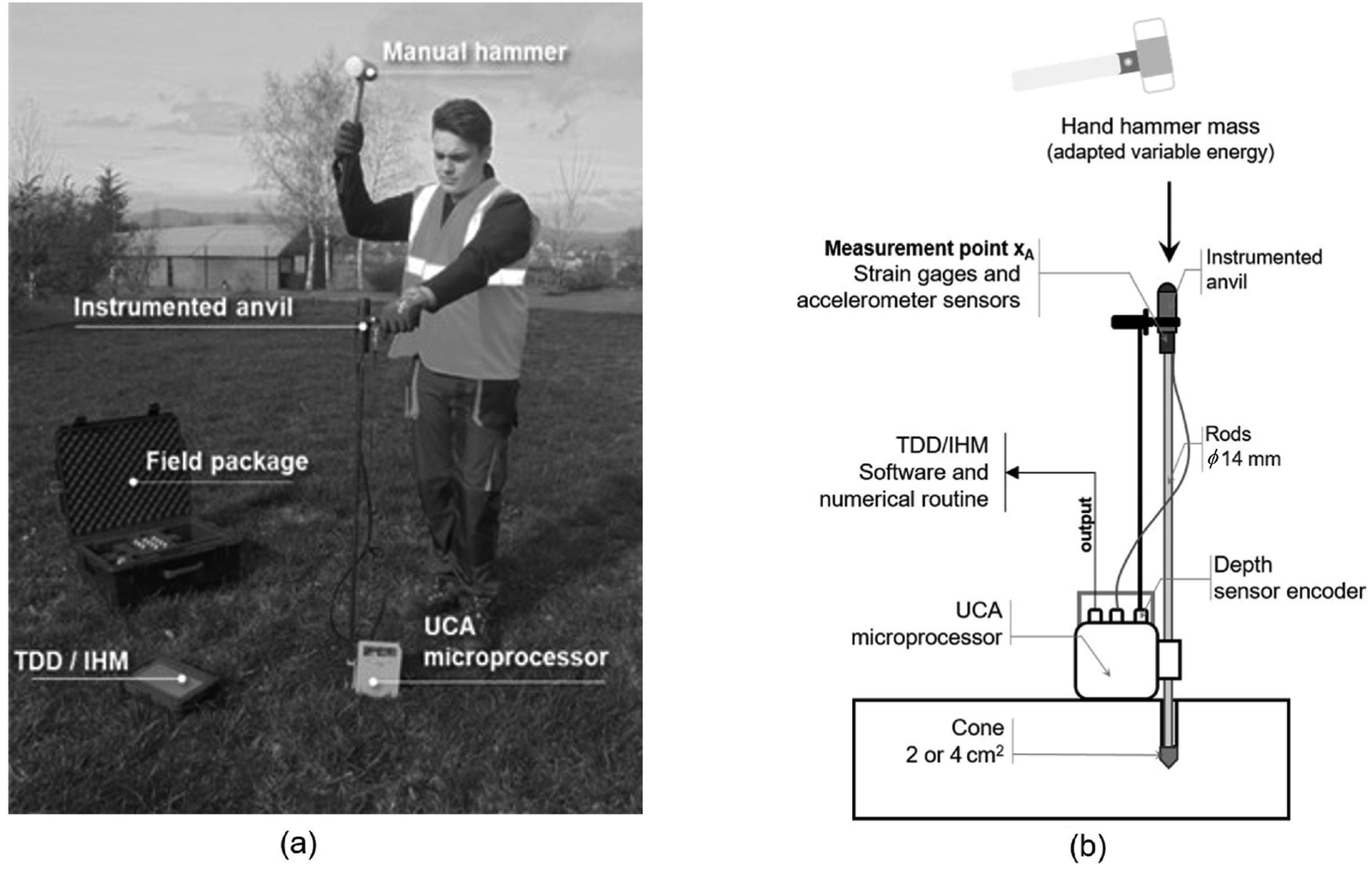-
Excavation-induced deep hard rock fracturing: Methodology and applications
Xia-Ting Feng, Cheng-Xiang Yang, Rui Kong, Jun Zhao, Yangyi Zhou, Zhibin Yao, Lei Hu
2022, 14(1): 1-34. doi:10.1016/j.jrmge.2021.12.003
Abstract: To analyze and predict the mechanical behaviors of deep hard rocks, some key issues concerning rock fracturing mechanics for deep hard rock excavations are discussed. First, a series of apparatuses and methods have been developed to test the mechanical properties and fracturing behaviors of hard rocks under high true triaxial stress paths. Evolution mechanisms of stress-induced disasters in deep hard rock excavationsShow FiguresTo analyze and predict the mechanical behaviors of deep hard rocks, some key issues concerning rock fracturing mechanics for deep hard rock excavations are discussed. First, a series of apparatuses and methods have been developed to test the mechanical properties and fracturing behaviors of hard rocks under high true triaxial stress paths. Evolution mechanisms of stress-induced disasters in deep hard rock excavations, such as spalling, deep cracking, massive roof collapse, large deformation and rockbursts, have been recognized. The analytical theory for the fracturing process of hard rock masses, including the three-dimensional failure criterion, stress-induced mechanical model, fracturing degree index, energy release index and numerical method, has been established. The cracking-restraint method is developed for mitigating or controlling rock spalling, deep cracking and massive collapse of deep hard rocks. An energy-controlled method is also proposed for the prevention of rockbursts. Finally, two typical cases are used to illustrate the application of the proposed methodology in the Baihetan caverns and Bayu tunnels of China.
[...]Read more. -
Soil–atmosphere interaction in earth structures
Yujun Cui
2022, 14(1): 35-49. doi:10.1016/j.jrmge.2021.11.004
Abstract: The soil–atmosphere interaction was investigated through laboratory testing, field monitoring and numerical monitoring. In the laboratory, the soil water evaporation mechanisms were studied using an environmental chamber equipped with a large number of sensors for controlling both the air parameters and soil parameters. Both sand and clay were considered. In case of sand, a dry layer could be formed during evapShow FiguresThe soil–atmosphere interaction was investigated through laboratory testing, field monitoring and numerical monitoring. In the laboratory, the soil water evaporation mechanisms were studied using an environmental chamber equipped with a large number of sensors for controlling both the air parameters and soil parameters. Both sand and clay were considered. In case of sand, a dry layer could be formed during evaporation in the near surface zone where the suction corresponded to the residual volumetric water content. The evaporative surface was situated at a depth where the soil temperature was the lowest. In case of clay, soil cracking occurred, changing the evaporative surface from one-dimensional to three-dimensional nature. The suctionbased evaporation model was adapted to take these phenomena into account by adopting a function of dry layer evolution in the case of sand and by adopting a surface crack ratio and a retative humidity ratio in the case of clay. In the field, the volumetric water content, and the suction as well as the runoff were monitored for an embankment constructed with lime/cement treated soils. It appeared that using precipitation data only did not allow a correct description of the variations of volumetric water content and suction inside the soils, the consideration of water evaporation being essential. It was possible to use a correlation between precipiration and runoff. The hydraulic conductivity was found to be a key parameter controlling the variations of volumetric water content and suction. For the numerical modelling, a fully coupled thermohydraulic model was developed, allowing analyzing the changes in temperature, volumetric water content and suction of soil, with the upper boundary conditions at the interface between soil and atmosphere determined using meteorological data. Comparison between simulations and measurements showed the performance of such numerical approach.
[...]Read more. -
Deformation-based support design for highly stressed ground with a focus on rockburst damage mitigation
P.K. Kaiser, A. Moss
2022, 14(1): 50-66. doi:10.1016/j.jrmge.2021.05.007
Abstract: As mines go deeper, mine designs become more fragile and effective rock support becomes a strategic element for ground control to facilitate timely construction and cost-effective access for uninterrupted production. This article focuses on the design of integrated support systems for brittle ground when large displacements due to gradual bulking of stress-fractured rock or sudden violent bulking during rockbursts arShow FiguresAs mines go deeper, mine designs become more fragile and effective rock support becomes a strategic element for ground control to facilitate timely construction and cost-effective access for uninterrupted production. This article focuses on the design of integrated support systems for brittle ground when large displacements due to gradual bulking of stress-fractured rock or sudden violent bulking during rockbursts are induced by static and dynamic loading. It provides an overview of support design principles for a rational approach to ground control in deep mines when large deformations are anticipated near excavations. Such designs must not only account for load equilibrium but also for deformation compatibility. Most importantly, the design approach must account for the fact that the support's displacement capacity is being consumed as it is deformed after support installation. It is therefore necessary to design for the remnant support capacity, i.e. the capacity remaining when the support is needed. Furthermore, if the support capacity can be consumed, it can also be restored by means of preventive support maintenance (PSM). The PSM concept for cost-effective ground control is introduced and illustrated by quantitative and operational evidence. Contrary to other design approaches, the deformation-based support design (DBSD) approach provides the capacity of an integrated support system as a function of imposed displacements. Reduction in this support capacity due to mining-induced deformation renders excavations increasingly more vulnerable if located within the influence of active mining and seismic activity. Because deformation measurements are robust indicators of the decay in support capacity, scanning and other displacement monitoring technologies enable measurements to verify the DBSD approach, to assess the remnant safety margin of the deformed support, and to make operational support maintenance decisions.
[...]Read more. -
An operational approach to ground control in deep mines
A. Moss, P.K. Kaiser
2022, 14(1): 67-81. doi:10.1016/j.jrmge.2021.05.008
Abstract: As mines go deeper and get larger, mine designs become more fragile largely due to the response of the rock mass to mining. Ground control and rock support become important levers in the mine construction schedule, production performance, and excavation health. For example, in cave mines, the production footprint together with associated mine infrastructure are significant investments in a modern caving operation. ThShow FiguresAs mines go deeper and get larger, mine designs become more fragile largely due to the response of the rock mass to mining. Ground control and rock support become important levers in the mine construction schedule, production performance, and excavation health. For example, in cave mines, the production footprint together with associated mine infrastructure are significant investments in a modern caving operation. This investment must be protected and maintained to reduce the risk of ground-related production disruptions. It is necessary to preserve the health of these excavations and their maintenance through an effective rock support design. Rock support thus becomes a strategic element in asset management. This article focuses on support design for brittle ground when displacements induced by stress-fracturing consume much of the support's capacity. It deals with the functionality of the support in deforming ground. Several interlinked concepts are important when assessing excavation health. Designs must not only account for load equilibrium but also for deformation compatibility and capacity consumption. Most importantly, the support's displacement capacity is being consumed when the rock mass is deformed after support installation. Hence, it is necessary to design for the support capacity remaining at the time when the support is needed. If support capacity can be consumed, it can also be restored by means of preventive support maintenance (PSM). This concept for cost-effective ground control is introduced and illustrated on operational evidence. Furthermore, how design can impact construction costs and schedule are discussed. Support is installed to provide a safe environment and preserve an operationally functional excavation. It also must assure senior management that investments in high quality support and its maintenance will substantially reduce delays and with it, costs. It is demonstrated that the use of ‘gabion-like’ support systems can achieve these goals. A technical summary of the ‘gabion panel’ support system design is presented.
[...]Read more. -
Physical model simulation of rock-support interaction for the tunnel in squeezing ground
Ketan Arora, Marte Gutierrez, Ahmadreza Hedayat
2022, 14(1): 82-92. doi:10.1016/j.jrmge.2021.08.016
Abstract: The existence of squeezing ground conditions can lead to significant challenges in designing an adequate support system for tunnels. Numerous empirical, observational and analytical methods have been suggested over the years to design support systems in squeezing ground conditions, but all of them have some limitations. In this study, a novel experimental setup having physical model for simulating the tunnel boring mShow FiguresThe existence of squeezing ground conditions can lead to significant challenges in designing an adequate support system for tunnels. Numerous empirical, observational and analytical methods have been suggested over the years to design support systems in squeezing ground conditions, but all of them have some limitations. In this study, a novel experimental setup having physical model for simulating the tunnel boring machine (TBM) excavation and support installation process in squeezing clay-rich rocks is developed. The observations are made to understand better the interaction between the support and the squeezing ground. The physical model included a large true-triaxial cell, a miniature TBM, laboratory-prepared synthetic test specimen with properties similar to natural mudstone, and an instrumented cylindrical aluminum support system. Experiments were conducted at realistic in situ stress levels to study the time-dependent three-dimensional tunnel support convergence. The tunnel was excavated using the miniature TBM in the cubical rock specimen loaded in the true-triaxial cell, after which the support was installed. The confining stress was then increased in stages to values greater than the rock's unconfined compressive strength. A model for the time-dependent longitudinal displacement profile (LDP) for the supported tunnel was proposed using the tunnel convergence measurements at different times and stress levels. The LDP formulation was then compared with the unsupported model to calculate the squeezing amount carried by the support. The increase in thrust in the support was back-calculated from an analytical solution with the assumption of linear elastic support. Based on the test results and case studies, a recommendation to optimize the support requirement for tunnels in squeezing ground is proposed.
[...]Read more. -
Effects of amygdale heterogeneity and sample size on the mechanical properties of basalt
Zhenjiang Liu, Chunsheng Zhang, Chuanqing Zhang, Huabin Wang, Hui Zhou, Bo Zhou
2022, 14(1): 93-107. doi:10.1016/j.jrmge.2021.10.001
Abstract: Due to the complex diagenesis process, basalt usually contains defects in the form of amygdales formed by diagenetic bubbles, which affect its mechanical properties. In this study, a synthetic rock mass method (SRM) based on the combination of discrete fracture network (DFN) and finite-discrete element method (FDEM) is applied to characterizing the amygdaloidal basalt, and to systematically exploring the effects of tShow FiguresDue to the complex diagenesis process, basalt usually contains defects in the form of amygdales formed by diagenetic bubbles, which affect its mechanical properties. In this study, a synthetic rock mass method (SRM) based on the combination of discrete fracture network (DFN) and finite-discrete element method (FDEM) is applied to characterizing the amygdaloidal basalt, and to systematically exploring the effects of the development characteristics of amygdales and sample sizes on the mechanical properties of basalt. The results show that with increasing amygdale content, the elastic modulus (E) increases linearly, while the uniaxial compressive strength (UCS) shows an exponential or logarithmic decay. When the orientation of amygdales is between 0° and 90°, basalt shows a relatively pronounced strength and stiffness anisotropy. Based on the analysis of the geometric and mechanical properties, the representative element volume (REV) size of amygdaloidal basalt blocks is determined to be 200 mm, and the mechanical properties obtained on this scale can be regarded as the properties of the equivalent continuum. The results of this research are of value to the understanding of the mechanical properties of amygdaloidal basalt, so as to guide the formulation of engineering design schemes more accurately.
[...]Read more. -
Convective heat transfer of water flow in intersected rock fractures for enhanced geothermal extraction
Yuedu Chen, Zhihong Zhao, Huan Peng
2022, 14(1): 108-122. doi:10.1016/j.jrmge.2021.05.005
Abstract: Numerous intersected rock fractures constitute the fracture network in enhanced geothermal systems. The complicated convective heat transfer behavior in intersected fractures is critical to the heat recovery in fractured geothermal reservoirs. A series of three-dimensional intersected fracture models is constructed to perform the flow-through heat transfer simulations. The geometry effects of dead-end fractures (DEFsShow FiguresNumerous intersected rock fractures constitute the fracture network in enhanced geothermal systems. The complicated convective heat transfer behavior in intersected fractures is critical to the heat recovery in fractured geothermal reservoirs. A series of three-dimensional intersected fracture models is constructed to perform the flow-through heat transfer simulations. The geometry effects of dead-end fractures (DEFs) on the heat transfer are evaluated in terms of intersected angles, apertures, lengths, and the connectivity. The results indicate that annular streamlines appear in the rough DEF and cause an ellipse distribution of the cold front. Compared to plate DEFs, the fluid flow in the rough DEF enhances the heat transfer. Both the increment of outlet water temperature ΔTout and the ratio of heat production Qr present the largest at the intersected angle of 90° while decline with the decrease of the intersected angle between the main flow fracture (MFF) and the DEFs. The extension of the length of intersected DEFs is beneficial to heat production while enhancing its aperture is not needed. Solely increasing the number of intersected DEFs induces a little increase of heat extraction, and more significant heat production can be obtained through connecting these DEFs with the MFF forming the flow network.
[...]Read more. -
Real-time prediction of rock mass classification based on TBM operation big data and stacking technique of ensemble learning
Shaokang Hou, Yaoru Liu, Qiang Yang
2022, 14(1): 123-143. doi:10.1016/j.jrmge.2021.05.004
Abstract: Real-time prediction of the rock mass class in front of the tunnel face is essential for the adaptive adjustment of tunnel boring machines (TBMs). During the TBM tunnelling process, a large number of operation data are generated, reflecting the interaction between the TBM system and surrounding rock, and these data can be used to evaluate the rock mass quality. This study proposed a stacking ensemble classifier for tShow FiguresReal-time prediction of the rock mass class in front of the tunnel face is essential for the adaptive adjustment of tunnel boring machines (TBMs). During the TBM tunnelling process, a large number of operation data are generated, reflecting the interaction between the TBM system and surrounding rock, and these data can be used to evaluate the rock mass quality. This study proposed a stacking ensemble classifier for the real-time prediction of the rock mass classification using TBM operation data. Based on the Songhua River water conveyance project, a total of 7538 TB M tunnelling cycles and the corresponding rock mass classes are obtained after data preprocessing. Then, through the tree-based feature selection method, 10 key TBM operation parameters are selected, and the mean values of the 10 selected features in the stable phase after removing outliers are calculated as the inputs of classifiers. The preprocessed data are randomly divided into the training set (90%) and test set (10%) using simple random sampling. Besides stacking ensemble classifier, seven individual classifiers are established as the comparison. These classifiers include support vector machine (SVM), k-nearest neighbors (KNN), random forest (RF), gradient boosting decision tree (GBDT), decision tree (DT), logistic regression (LR) and multi-layer perceptron (MLP), where the hyper-parameters of each classifier are optimised using the grid search method. The prediction results show that the stacking ensemble classifier has a better performance than individual classifiers, and it shows a more powerful learning and generalisation ability for small and imbalanced samples. Additionally, a relative balance training set is obtained by the synthetic minority oversampling technique (SMOTE), and the influence of sample imbalance on the prediction performance is discussed.
[...]Read more. -
Analytical computation of support characteristic curve for circumferential yielding lining in tunnel design
Kui Wu, Zhushan Shao, Mostafa Sharifzadeh, Siyuan Hong, Su Qin
2022, 14(1): 144-152. doi:10.1016/j.jrmge.2021.06.016
Abstract: Circumferential yielding lining is able to tolerate controlled displacements without failure, which has been proven to be an effective solution to large deformation problem in squeezing tunnels. However, up to now, there has not been a well-established design method for it. This paper aims to present a detailed analytical computation of support characteristic curve (SCC) for circumferential yielding lining, which isShow FiguresCircumferential yielding lining is able to tolerate controlled displacements without failure, which has been proven to be an effective solution to large deformation problem in squeezing tunnels. However, up to now, there has not been a well-established design method for it. This paper aims to present a detailed analytical computation of support characteristic curve (SCC) for circumferential yielding lining, which is a significant aspect of the implementation of convergence-confinement method (CCM) in tunnel support design. Circumferential yielding lining consists of segmental shotcrete linings and highly deformable elements, and its superior performance mainly depends on the mechanical characteristic of highly deformable element. The deformation behavior of highly deformable element is firstly investigated. Its whole deforming process can be divided into three stages including elastic, yielding and compaction stages. Especially in the compaction stage of highly deformable element, a nonlinear stress–strain relationship can be observed. For mathematical convenience, the stress–strain curve in this period is processed as several linear sub-curves. Then, the reasons for closure of circumferential yielding lining in different stages are explained, and the corresponding accurate equations required for constructing the SCC are provided. Furthermore, this paper carries out two case studies illustrating the application of all equations needed to construct the SCC for circumferential yielding lining, where the reliability and feasibility of theoretical derivation are also well verified. Finally, this paper discusses the sensitivity of sub-division in element compaction stage and the influence of element length on SCC. The outcome of this paper could be used in the design of proper circumferential yielding lining.
[...]Read more. -
A new estimation method and an anisotropy index for the deformation modulus of jointed rock masses
Bohu Zhang, Junyan Mu, Jun Zheng, Qing Lv, Jianhui Deng
2022, 14(1): 153-168. doi:10.1016/j.jrmge.2021.06.005
Abstract: The deformation modulus of a rock mass is an important parameter to describe its mechanical behavior. In this study, an analytical method is developed to determine the deformation modulus of jointed rock masses, which considers the mechanical properties of intact rocks and joints based on the superposition principle. Due to incorporating the variations in the orientations and sizes of joint sets, the proposed methodShow FiguresThe deformation modulus of a rock mass is an important parameter to describe its mechanical behavior. In this study, an analytical method is developed to determine the deformation modulus of jointed rock masses, which considers the mechanical properties of intact rocks and joints based on the superposition principle. Due to incorporating the variations in the orientations and sizes of joint sets, the proposed method is applicable to the rock mass with persistent and parallel joints as well as that with non-persistent and nonparallel joints. In addition, an anisotropy index AIdm for the deformation modulus is defined to quantitatively describe the anisotropy of rock masses. The range of AIdm is from 0 to 1, and the more anisotropic the rock mass is, the larger the value of AIdm will be. To evaluate the proposed method, 20 groups of numerical experiments are conducted with the universal distinct element code (UDEC). For each experimental group, the deformation modulus in 24 directions are obtained by UDEC (numerical value) and the proposed method (predicted value), and then the mean error rates are calculated. Note that the mean error rate is the mean value of the error rates of the deformation modulus in 24 directions, where for each direction, the error rate is equal to the ratio of numerical value minus predicted value to the numerical value. The results show that (i) for different experimental groups, the mean error rates vary between 5.06% and 22.03%; (ii) the error rates for the discrete fracture networks (DFNs) with two sets of joints are at the same level as those with one set of joints; and (iii) therefore, the proposed method for estimating the deformation modulus of jointed rock masses is valid.
[...]Read more. -
Numerical analysis of slope collapse using SPH and the SIMSAND critical state model
Zhao Lu, Zhuang Jin, Panagiotis Kotronis
2022, 14(1): 169-179. doi:10.1016/j.jrmge.2021.03.009
Abstract: Geological disasters such as slope failure and landslides can cause loss of life and property. Therefore, reproducing their evolution process is of great importance for risk assessment and mitigation. The recently developed SIMSAND critical state sand model combined with the smoothed particle hydrodynamics (SPH) method is adopted in this work to study slope failure under large deformations. To illustrate the efficienShow FiguresGeological disasters such as slope failure and landslides can cause loss of life and property. Therefore, reproducing their evolution process is of great importance for risk assessment and mitigation. The recently developed SIMSAND critical state sand model combined with the smoothed particle hydrodynamics (SPH) method is adopted in this work to study slope failure under large deformations. To illustrate the efficiency and accuracy of the SIMSAND-SPH approach, a series of slope collapse studies using the discrete element method (DEM) considering various particle shapes (i.e. spherical, tetrahedral and elongated) is adopted as benchmarks. The parameters of the SIMSAND model are calibrated using DEM triaxial tests. In comparison to the DEM simulations, the runout distance and final slope height are well characterized with the SIMSAND-SPH approach with less computational cost. All comparisons show that the SIMSAND-SPH approach is highly efficient and accurate, which can be an alternative numerical tool to simulate real scale granular flow.
[...]Read more. -
The use of the node-based smoothed finite element method to estimate static and seismic bearing capacities of shallow strip footings
H.C. Nguyen, T. Vo-Minh
2022, 14(1): 180-196. doi:10.1016/j.jrmge.2021.11.005
Abstract: The node-based smoothed finite element method (NS-FEM) is shortly presented for calculations of the static and seismic bearing capacities of shallow strip footings. A series of computations has been performed to assess variations in seismic bearing capacity factors with both horizontal and vertical seismic accelerations. Numerical results obtained agree very well with those using the slip-line method, revealing thatShow FiguresThe node-based smoothed finite element method (NS-FEM) is shortly presented for calculations of the static and seismic bearing capacities of shallow strip footings. A series of computations has been performed to assess variations in seismic bearing capacity factors with both horizontal and vertical seismic accelerations. Numerical results obtained agree very well with those using the slip-line method, revealing that the magnitude of the seismic bearing capacity is highly dependent upon the combinations of various directions of both components of the seismic acceleration. An upward vertical seismic acceleration reduces the seismic bearing capacity compared to the downward vertical seismic acceleration in calculations. In addition, particular emphasis is placed on a separate estimation of the effects of soil and superstructure inertia on each seismic bearing capacity component. While the effect of inertia forces arising in the soil on the seismic bearing capacity is non-trivial, and the superstructure inertia is the major contributor to reductions in the seismic bearing capacity. Both tables and charts are given for practical application to the seismic design of the foundations.
[...]Read more. -
Influence of anisotropic stress path and stress history on stiffness of calcareous sands from Western Australia and the Philippines
Huan He, Siyue Li, Kostas Senetakis, Matthew Richard Coop, Songyu Liu
2022, 14(1): 197-209. doi:10.1016/j.jrmge.2021.03.015
Abstract: Investigation of dynamic properties of carbonate/calcareous soils is important in earthquake and offshore engineering as these soils are commonly encountered in large-scale projects related with energy geomechanics and land reclamation. In this study, the stiffness and stiffness anisotropy of two types of calcareous sands (CS) from the Western Australia and the Philippines were examined using bender elements configurShow FiguresInvestigation of dynamic properties of carbonate/calcareous soils is important in earthquake and offshore engineering as these soils are commonly encountered in large-scale projects related with energy geomechanics and land reclamation. In this study, the stiffness and stiffness anisotropy of two types of calcareous sands (CS) from the Western Australia and the Philippines were examined using bender elements configured in different directions in stress path setups. Stiffness measurements were taken on specimens subjected to constant p′ compression/extension and biaxial stress paths and additional tests were performed on three types of silica sands with different geological origins and particle shapes, which were used as benchmark materials in the study. Compared with the three brands of silica sands, the stiffness of the CS was found to be more significantly influenced by anisotropic loading; an important observation of the experimental results was that stress anisotropy had different weighted influences on the stiffness in different directions, thus influencing stiffness anisotropy. Comparisons were made between the specimens subjected to complex loading paths, and respected model parameters as suggested from published expressions in the literature. These comparisons further highlighted that calcareous soils have different responses in terms of stiffness, stiffness anisotropy and loading history, compared with that of silica-based sands.
[...]Read more. -
Estimation of thermal conductivity of cemented sands using thermal network models
Wenbin Fei, Guillermo A. Narsilio
2022, 14(1): 210-218. doi:10.1016/j.jrmge.2021.08.008
Abstract: Effective thermal conductivity of soils can be enhanced to achieve higher efficiencies in the operation of shallow geothermal systems. Soil cementation is a ground improvement technique that can increase the interparticle contact area, leading to a high effective thermal conductivity. However, cementation may occur at different locations in the soil matrix, i.e. interparticle contacts, evenly or unevenly around partiShow FiguresEffective thermal conductivity of soils can be enhanced to achieve higher efficiencies in the operation of shallow geothermal systems. Soil cementation is a ground improvement technique that can increase the interparticle contact area, leading to a high effective thermal conductivity. However, cementation may occur at different locations in the soil matrix, i.e. interparticle contacts, evenly or unevenly around particles, in the pore space or a combination of these. The topology of cementation at the particle scale and its influence on soil response have not been studied in detail to date. Additionally, soils are made of particles with different shapes, but the impact of particle shape on the cementation and the resulting change of effective thermal conductivity require further research. In this work, three kinds of sands with different particle shapes were selected and cementation was formed either evenly around the particles, or along the direction parallel or perpendicular to that of heat transfer. The effective thermal conductivity of each sample was computed using a thermal conductance network model. Results show that dry sand with more irregular particle shape and cemented along the heat transfer direction will lead to a more efficient thermal enhancement of the soil, i.e. a comparatively higher soil effective thermal conductivity.
[...]Read more. -
A geometrically and locally adaptive remeshing method for finite difference modeling of mining-induced surface subsidence
Ziyu Zhang, Gang Mei, Nengxiong Xu
2022, 14(1): 219-231. doi:10.1016/j.jrmge.2021.11.001
Abstract: Surface subsidence induced by underground mining is a typical serious geohazard. Numerical approaches such as the discrete element method (DEM) and finite difference method (FDM) have been widely used to model and analyze mining-induced surface subsidence. However, the DEM is typically computationally expensive, and is not capable of analyzing large-scale problems, while the mesh distortion may occur in the FDM modelShow FiguresSurface subsidence induced by underground mining is a typical serious geohazard. Numerical approaches such as the discrete element method (DEM) and finite difference method (FDM) have been widely used to model and analyze mining-induced surface subsidence. However, the DEM is typically computationally expensive, and is not capable of analyzing large-scale problems, while the mesh distortion may occur in the FDM modeling of largely deformed surface subsidence. To address the above problems, this paper presents a geometrically and locally adaptive remeshing method for the FDM modeling of largely deformed surface subsidence induced by underground mining. The essential ideas behind the proposed method are as follows: (i) Geometrical features of elements (i.e. the mesh quality), rather than the calculation errors, are employed as the indicator for determining whether to conduct the remeshing; and (ii) Distorted meshes with multiple attributes, rather than those with only a single attribute, are locally regenerated. In the proposed method, the distorted meshes are first adaptively determined based on the mesh quality, and then removed from the original mesh model. The tetrahedral mesh in the distorted area is first regenerated, and then the physical field variables of old mesh are transferred to the new mesh. The numerical calculation process recovers when finishing the regeneration and transformation. To verify the effectiveness of the proposed method, the surface deformation of the Yanqianshan iron mine, Liaoning Province, China, is numerically investigated by utilizing the proposed method, and compared with the numerical results of the DEM modeling. Moreover, the proposed method is applied to predicting the surface subsidence in Anjialing No. 1 Underground Mine, Shanxi Province, China.
[...]Read more. -
Surface reconstruction with spherical harmonics and its application for single particle crushing simulations
Deheng Wei, Budi Zhao, Yixiang Gan
2022, 14(1): 232-239. doi:10.1016/j.jrmge.2021.07.016
Abstract: Particle morphology has great influence on mechanical behaviour and hydro/thermal/electrical conductivities of granular materials. Surface reconstruction and mesh generation are critical to consider realistic particle shapes in various computational simulations. This study adopts the combined finite- discrete element method (FDEM) to investigate single particle crushing behaviour. Particle shapes were reconstructed wShow FiguresParticle morphology has great influence on mechanical behaviour and hydro/thermal/electrical conductivities of granular materials. Surface reconstruction and mesh generation are critical to consider realistic particle shapes in various computational simulations. This study adopts the combined finite- discrete element method (FDEM) to investigate single particle crushing behaviour. Particle shapes were reconstructed with spherical harmonic (SH) in both spherical and Cartesian coordinate systems. Furthermore, the reconstructed surface mesh qualities in two coordinate systems are investigated and compared. Although the efficiency of the two SH systems in reconstructing star-like shapes is nearly identical, SH in Cartesian coordinate system can reconstruct non-star-like shapes with the help of surface parameterisation. Meanwhile, a higher triangular mesh quality is generated with spherical coordinate. In single particle crushing tests, the low mesh quality produces more fluctuations on load–displacement curves. The particles with more surficial mesh elements tend to have a lower contact stiffness due to more contact stress concentrations induced by complexity of morphology features and more volumetric tetrahedral elements. The fracture patterns are also influenced by mesh quality and density, e.g. a particle with fewer mesh elements has a simpler fragmentation pattern. This study serves as an essential step towards modelling particle breakage using FDEM with surface mesh directly from SH reconstruction.
[...]Read more. -
Applicability of discrete element method with spherical and clumped particles for constitutive study of granular materials
Tongming Qu, Min Wang, Yuntian Feng
2022, 14(1): 240-251. doi:10.1016/j.jrmge.2021.09.015
Abstract: Discrete element method (DEM) has been intensively used to study the constitutive behaviour of granular materials. However, to what extent a real granular material can be reproduced by virtual DEM simulations remains unclear. This study attempts to answer this question by comparing DEM simulations with typical features of experimental granular materials. Three groups of models with spherical and clumped particles areShow FiguresDiscrete element method (DEM) has been intensively used to study the constitutive behaviour of granular materials. However, to what extent a real granular material can be reproduced by virtual DEM simulations remains unclear. This study attempts to answer this question by comparing DEM simulations with typical features of experimental granular materials. Three groups of models with spherical and clumped particles are investigated from four perspectives: (i) deviatoric stress and volumetric behaviour; (ii) critical state behaviour; (iii) stress-dilatancy relationship; and (iv) the evolution of principal stress ratio against axial strain. The results demonstrate that DEM with spherical or clumped particles is capable of qualitatively describing macroscopic deviatoric stress responses, volumetric behaviour, and critical state behaviour observed in experiments for granular materials. On the other hand, some qualitative deviations between experiments and the investigated DEM simulations are also observed, in terms of the stress-dilatancy behaviour and principal stress ratio against axial strain, which are proven to be critical for constitutive modelling. The results demonstrate that DEM with spherical or clumped particles may not necessarily fully capture experimental features of granular materials even from a qualitative perspective. It is thus encouraged to thoroughly validate DEM with experiments when developing constitutive models based on DEM observations.
[...]Read more. -
Intermittent swelling and shrinkage of a highly expansive soil treated with polyacrylamide
Amin Soltani, An Deng, Abbas Taheri, Brendan C. O'Kelly
2022, 14(1): 252-252261. doi:10.1016/j.jrmge.2021.04.009
Abstract: This laboratory study examines the potential use of an anionic polyacrylamide (PAM)-based material as an environmentally sustainable additive for the stabilization of an expansive soil from South Australia. The experimental program consisted of consistency limits, sediment volume, compaction and oedometer cyclic swell–shrink tests, performed using distilled water and four different PAM-to-water solutions of PDShow FiguresThis laboratory study examines the potential use of an anionic polyacrylamide (PAM)-based material as an environmentally sustainable additive for the stabilization of an expansive soil from South Australia. The experimental program consisted of consistency limits, sediment volume, compaction and oedometer cyclic swell–shrink tests, performed using distilled water and four different PAM-to-water solutions of PD = 0.1 g/L, 0.2 g/L, 0.4 g/L and 0.6 g/L as the mixing liquids. Overall, the relative swelling and shrinkage strains were found to decrease with increasing number of applied swell–shrink cycles, with an ‘elastic equilibrium’ condition achieved on the conclusion of four cycles. The propensity for swelling/shrinkage potential reduction (for any given cycle) was found to be in favor of increasing the PAM dosage up to PD = 0.2 g/L, beyond which the excess PAM molecules self-associate as aggregates, thereby functioning as a lubricant instead of a flocculant; this critical dosage was termed ‘maximum flocculation dosage’ (MFD). The MFD assertion was discussed and validated using the consistency limits and sediment volume properties, both exhibiting only marginal variations beyond the identified MFD of PD = 0.2 g/L. The accumulated axial strain progressively transitioned from ‘expansive’ for the unamended soil to an ideal ‘neutral’ state at the MFD, while higher dosages demonstrated undesirable ‘contractive’ states.
[...]Read more. -
Relating thermal conductivity of soil skeleton with soil texture by the concept of “local thermal conductivity fluctuation”
Adrian Różański
2022, 14(1): 262-271. doi:10.1016/j.jrmge.2021.06.008
Abstract: The thermal conductivity of the soil skeleton λs is an essential parameter from the point of view of the correct assessment of soil overall/effective conductivity. This work introduces the concept of “local thermal conductivity fluctuation” which characterizes the microscale variation of conductivity within the solid phase. It is proposed to link the “local fluctuation” of thermal conduShow FiguresThe thermal conductivity of the soil skeleton λs is an essential parameter from the point of view of the correct assessment of soil overall/effective conductivity. This work introduces the concept of “local thermal conductivity fluctuation” which characterizes the microscale variation of conductivity within the solid phase. It is proposed to link the “local fluctuation” of thermal conductivity λ with the soil texture – the information that is available at the scale of engineering applications. It was possible to relate the skeleton thermal conductivity with the grain size distribution of the soil. Finally, based on a large series of numerical simulations, the paper provides four triangle diagrams (at different organic matter contents: 0%, 2%, 4% and 6%) relating the value of λs with volume fraction of individual soil separates. This result is extremely important from the practical point of view. One can quickly evaluate λs value provided that information on the grain size distribution and organic matter content is available.
[...]Read more. -
Analysis of ground deformation development and settlement prediction by air-boosted vacuum preloading
Shuangxi Feng, Huayang Lei, Cheng Lin
2022, 14(1): 272-288. doi:10.1016/j.jrmge.2021.05.006
Abstract: Vacuum preloading has been widely used to improve soft soils in coastal areas of China. An increasing amount of evidence from field operations has shown that conventional vacuum preloading is prone to clogging in prefabricated vertical drains (PVDs) and demands a large volume of sand fills. In recent years, air-boosted vacuum preloading has been developed to overcome these limitations; however, this method still requShow FiguresVacuum preloading has been widely used to improve soft soils in coastal areas of China. An increasing amount of evidence from field operations has shown that conventional vacuum preloading is prone to clogging in prefabricated vertical drains (PVDs) and demands a large volume of sand fills. In recent years, air-boosted vacuum preloading has been developed to overcome these limitations; however, this method still requires more data to verify its performance. In this study, a field test for air-boosted vacuum preloading was conducted, and a large-strain two-dimensional (2D) finite element (FE) model was developed and validated against the field test data. Then, a series of FE parametric analyses was performed to assess key factors, i.e. the air injection pressure, the injection spacing, and the characteristics of cyclic injection, which affect the performance of the air-boosted vacuum preloading. The results showed that the ground settlement and lateral displacement of the soils increased due to an increase in the injection pressure, a decrease in the injection spacing, or increases in the number and duration of the injection cycles. Based on the parametric analyses, an empirical formula for ground settlement prediction was proposed and compared with a case history reported in the literature, showing good agreement.
[...]Read more. -
Application of wave equation theory to improve dynamic cone penetration test for shallow soil characterisation
Miguel Angel Benz Navarrete, Pierre Breul, Roland Gourvès
2022, 14(1): 289-302. doi:10.1016/j.jrmge.2021.07.004
Abstract: Among the geotechnical in situ tests, the dynamic penetration test (DPT) is commonly used around the world. However, DPT remains a rough technique and provides only one failure parameter: blow count or cone resistance. This paper presents an improvement of the dynamic cone penetration test (DCPT) for soil characterisation based on the wave equation theory. Implemented on an instrumented lightweight dynamic penetrometShow FiguresAmong the geotechnical in situ tests, the dynamic penetration test (DPT) is commonly used around the world. However, DPT remains a rough technique and provides only one failure parameter: blow count or cone resistance. This paper presents an improvement of the dynamic cone penetration test (DCPT) for soil characterisation based on the wave equation theory. Implemented on an instrumented lightweight dynamic penetrometer driving with variable energy, the main process of the test involves the separation and reconstruction of the waves propagating in the rods after each blow and provides a dynamic cone load-penetration (DCLT) curve. An analytical methodology is used to analyse this curve and to estimate additional strength and deformation parameters of the soil: dynamic and pseudo-static cone resistances, deformation modulus and wave velocity. Tests carried out in the laboratory on different specimens (wood, concrete, sand and clay) in an experimental sand pit and in the field demonstrated that the resulting DCLT curve is reproducible, sensitive and reliable to the test conditions (rod length, driving energy, etc.) as well as to the soil properties (nature, density, etc.). Obtained results also showed that the method based on shock polar analysis makes it possible to evaluate mechanical impedance and wave velocity of soils, as demonstrated by the comparisons with cone penetration test (CPT) and shear wave velocity measurements made in the field. This technique improves the method and interpretation of DPT and provides reliable data for shallow foundation design.
[...]Read more. -
Abstract: The contributions of the following reviewers are highly acknowledged for their hard work and kind supports to JRMGE.
The contributions of the following reviewers are highly acknowledged for their hard work and kind supports to JRMGE.
[...]Read more.


